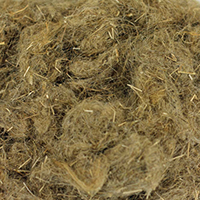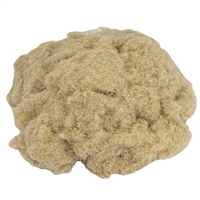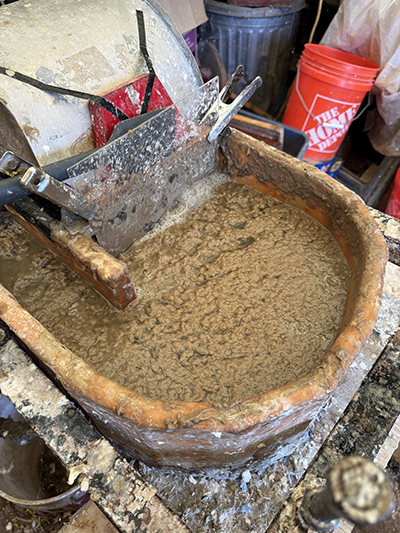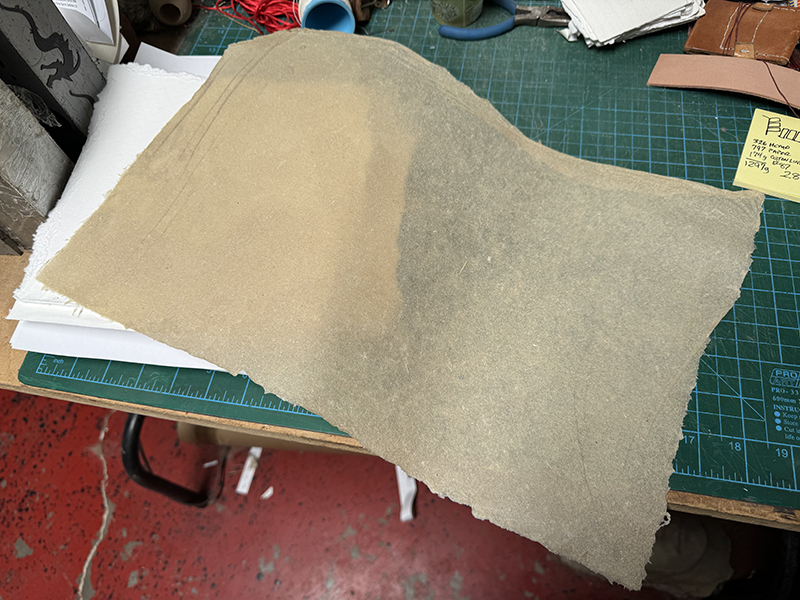
I have made paper from lots of natural fibers but I had been putting off some of the plant fibers that I have gathered. Why? Just like anybody else's why, time. Sure I made blue jean paper and 100% cotton paper, paper from cotton rags and linen rags but not plant fiber. After I saw the success of the Osage Orange tree sawdust dyeing, I was enthusiastic.
Fibers definitely have been collected. I purchased some hemp fibers (1 lb for $6) and I thought that wasn't enough so many years later I bought some more (1 lb for $40) and you can see that with the popularity of hemp the price has definitely gone up. Farmers seem to be paying premium prices for sticks and stems from hemp and even the spent hops and other beer making waste gets snatched up by farmers. Make friends with growers and brewers so you can get natural fibers once in a while.
Let's talk about hemp first and other fibers as we get to them. You can get hemp in a variety of stages: raw bast fiber (part of the plant made up of strands that run its length and surround the woody core of the stem), cleaned and shredded 1-4 mm hurd fiber, hemp sliver (like fiber that you would spin yarn or thread out of), and hemp tow (made of secondary hemp fibers, extracted from the long fiber with a hackle. Has some sticks and bast in it). The hurd or the tow is good for papermaking.


With all fiber, I at least soak it overnight and then cook it the next day. I have a 3 lb beater, so starting with 2 lb of fiber should not be an issue. The 2 lb was hemp tow (with sticks and twigs and bast fibers). I also added 172 grams of cotton linter, just for good measure. I needed to be more diligent with the soaking and cooking and some trimming of fibers. BUT I DIDN'T. Learn from my mistakes. OK I didn't soak it overnight. I cooked the 2 lb of hemp in 3 1/2 gal of water with 4 oz of NaCO3 (sodium carbonate or washing soda) for 7 hrs. The fiber was rinsed 4 times before water was clear.
There was SO MUCH FIBER, I was worried that it wouldn't process well. One thing that I have learned, with natural fibers (like cotton), you have to bring the drum down after a few minutes. It needs to get to the "lump" stage almost immediately or the fiber will knot up and create horrible masses of knots that could seriously damage your beater! (And you thought the beater was indestructible!) I only put 700 grams of cooked and washed hemp fiber in 6.5 gal water in the beater and dropped the drum to almost its lowest setting. It was at "full lump" for 1.5 hrs. with a 15 min sizing run (1.7 Tbs AKD).

It was kinda thin but that happens with fiberous fiber. In order to get things beaten down to the right size, you have a tendency to overbeat the pulp. I know papermakers that beat hemp for up to 6 hours. I didn't do that but I still had a lot of raw fibers I needed to still process. NOTE: I still had to process 2 more batches.. I knew that I was going to have to use percentage in the vat, that was usually used for thin pulp.
With it thin and overprocessed, you use less water in the vat (6 gals in my vat), 7 qts pulp from the beater, and a 1/2 tsp formation aid, blended in a qt of water added to the vat to slow drainage of the sheet. I had to add a qt. of pulp every two sheets. I got 40 A3s from that batch.
Here is the one horrible thing that happened. I don't make much paper in the summer here in Tucson, AZ because I am doing it out under my carport. And it is so bloody hot out, you have to work early in the morning. Well that day was in the middle of summer monsoons, so it was a bit humid (alot humid) that day. So after I got as many sheets as I could make made, I put the post into the 20 ton press. Since it was raining and all, I left the post in the press until the next morning. BIG Mistake. The paper and the felts had a lot of black mold on them. And it smelled. OH NO! What to do? I questioned every papermaker I could about getting rid of the mold or at least trying to salvage some of it.
The paper needs to go into the dryer and I thought "it is going to mold the blotters as well and just blow it everywhere." Fortunately, it didn't rain for a couple of days and the temperature heated up. I kept the paper in the dryer for 48 hrs. I put the moldy felts in the blazing Arizona sun. At the end of 48 hrs. the paper was dry, beautiful and mold free! The felts were also, now mold free. I washed them and dried them outside just for good measure. So the moral of that run of paper is&helip; put the post in the press and squeeze all the water out and immediately put the paper in the dryer.
